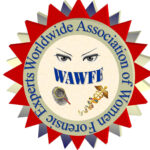The increased sensitivity of modern DNA typing kits has made the interpretation of some trace-level casework results challenging. Those challenges are not limited to forensic questions involving human identification and they are not exclusively scientific in nature. Questions surrounding “how” and “when” trace DNA samples were deposited (activity level issues) are now routinely litigated in courtroom across the United States.
The frequent occurrence of activity level issues in criminal cases has led to increased calls for U.S. forensic laboratories to implement formal activity level evaluations. Such evaluations, based largely on literature and guidance documents authored by the European and Australasian forensic science communities, require that practitioners: 1) consider the framework of case circumstances; 2) consider two or more competing propositions that represent the parties’ positions (the prosecution’s proposition, Hp, and the defense proposition, Hd); and 3) consider the probability of the findings given the propositions addressed.[1]
The second requirement presents prosecutors with significant problems of proof in U.S. courts. When the defense fails to disclose Hd in the pretrial phase of a case (which it is not obligated to do and almost never does), activity level guidance documents recommend the expert adopt — on behalf of the defense — one or more “reasonable” or “relevant” propositions that likely reflect the defendant’s position on the activity level issue. In addition, some activity level papers propose that Hd be formulated based on speculative and unspecified “social contact” between the complainant and the defendant. Finally, a large-scale European interlaboratory research project is currently underway to generate experimental data for formal activity level evaluations. The project is using controlled experiments to simulate typical casework scenarios that will be used as a proxy defense propositions.
These recommendations, workarounds, and experimental efforts may be reasonable scientific solutions for an unknown Hd, but they fail to solve the legal problem of proof. If the prosecution cannot offer adequate independent evidence of the facts assumed by its expert (Hd in particular), it will fail to satisfy the requirements of conditional relevance under Federal Rule 104(b), “fit” (foundational relevance) under Federal Rule 702(a), and scientific “knowledge” under Federal Rule 702(b). In addition, U.S. law requires that inferences drawn from admitted (but often ambiguous) facts must be reasonable, not speculative or fanciful in nature. Given a timely objection, the prosecution’s failure of proof would lead to the exclusion of: 1) Hd; 2) the probability of the evidence given Hd; and 3) the resulting likelihood ratio (LR). This cascading collapse of the evaluative framework would leave only Hp and the probability of the evidence given Hp intact.
Despite formal activity level testimony’s dim prospects for success in U.S. courts, it may still be admissible in limited circumstances, including: 1) evaluations where Hd is merely the simple negation of Hp (no additional evidence is needed beyond that which supports Hp); 2) cases in which the defendant provides investigators a sufficiently specific pretrial activity level Hd and the prosecution later decides to offer that statement as evidence at trial; 3) cases where the complainant or another witness provides adequate evidence that supports both Hp and Hd during the government’s case; 4) cases in which the defendant declines to give investigators a pretrial statement, but adopts the prosecution’s proxy Hd during his testimony — because it results in an LR favorable to the defense; and 5) prosecution rebuttal cases where the defense has offered evidence that supports an activity level Hd (and other legal requirements have been met).
Unfortunately, few real-world cases will fit into these narrow categories. Moreover, even if a defendant has disclosed his activity level Hd in the pretrial phase of the case, he is not obligated to maintain that position at trial. Instead, the defense retains the right to revise, reconstruct, or completely reject it during trial — effectively turning Hd into a real-time moving target for the prosecution. This creates serious (or insurmountable) legal, practical, and scientific problems for the government’s activity level theory (which must include its chosen Hd), making it inadmissible in most cases. Given small number of cases in which formal activity level testimony would be possible, practical, and legally admissible, the best path forward may be to improve and refine informal activity level testimony and to carefully define and observe its scientific and legal limitations.
[1] Duncan Taylor & Bas Kokshoorn, Forensic DNA Trace Interpretation: Activity Level Propositions and Likelihood Ratios 16-19 (CRC Press 1st ed. 2023).


